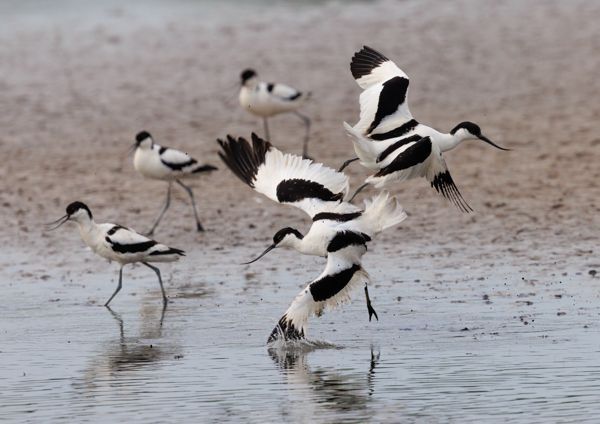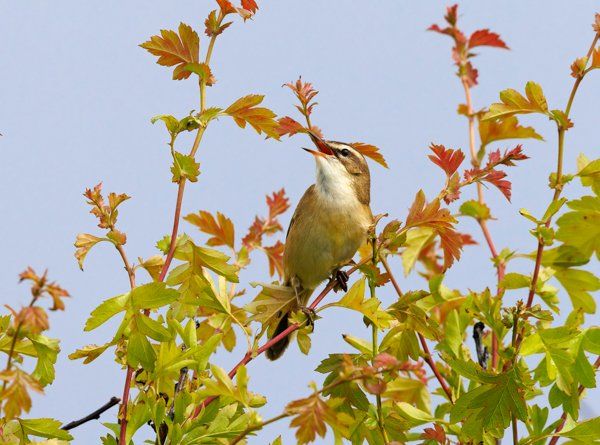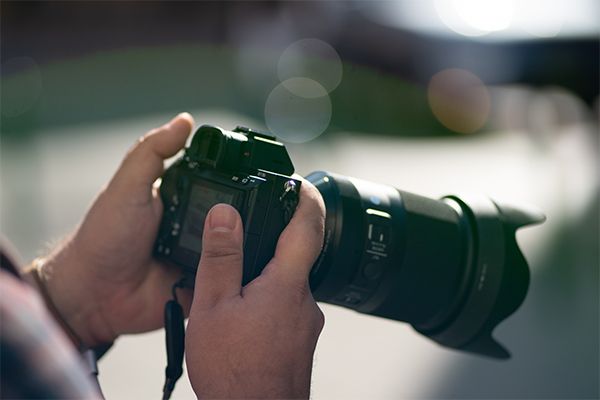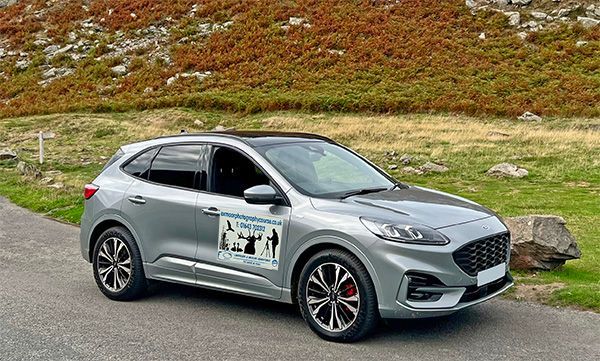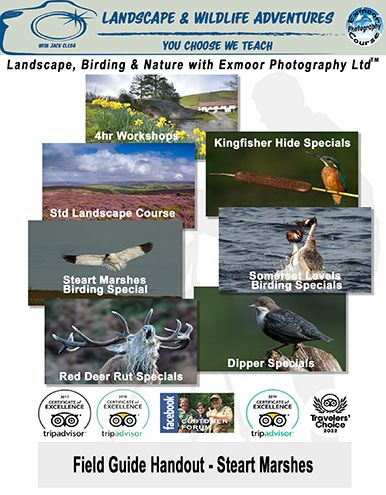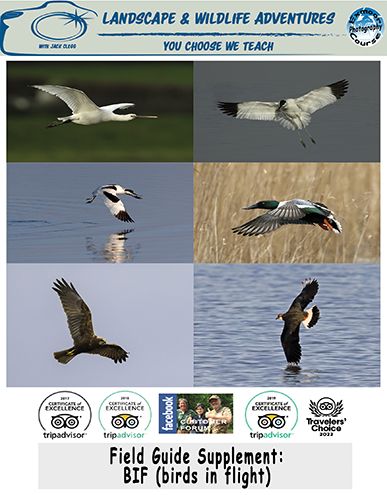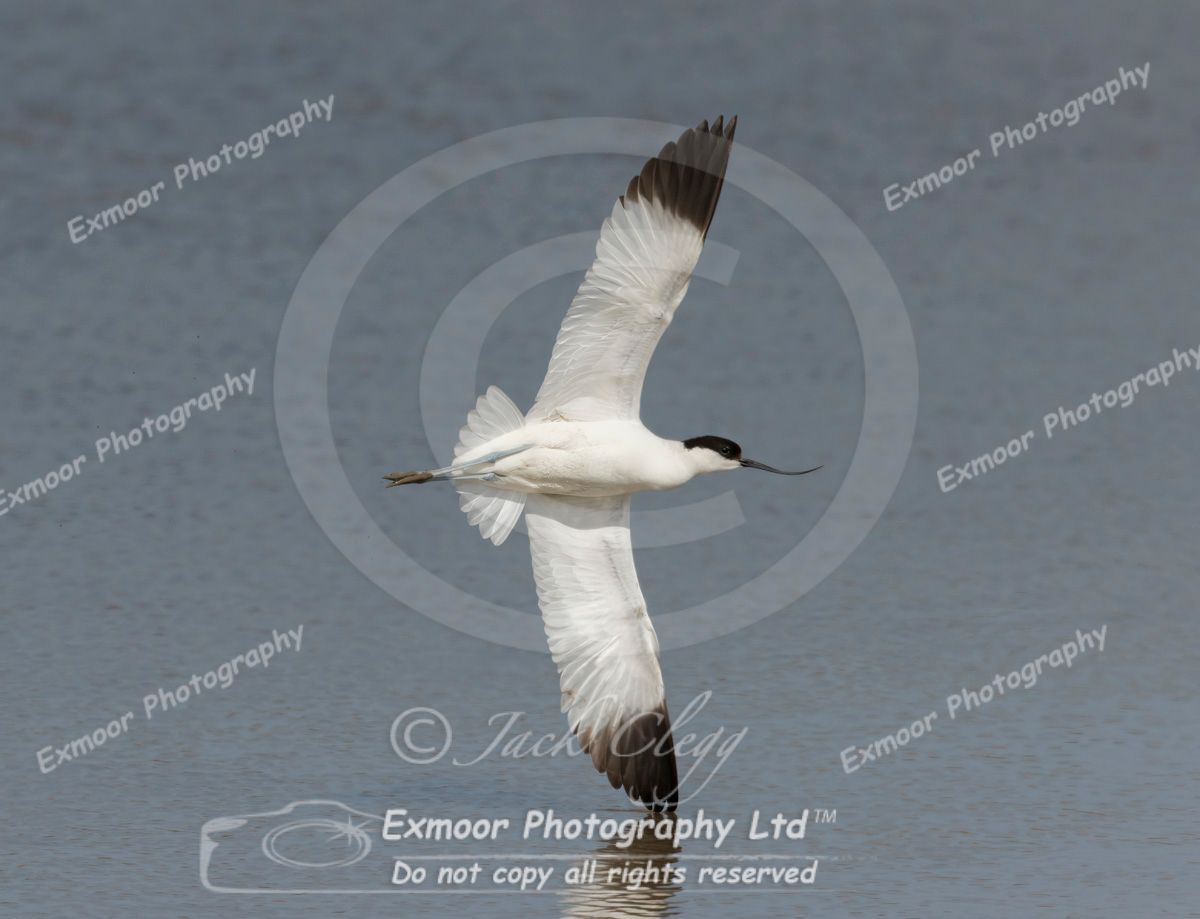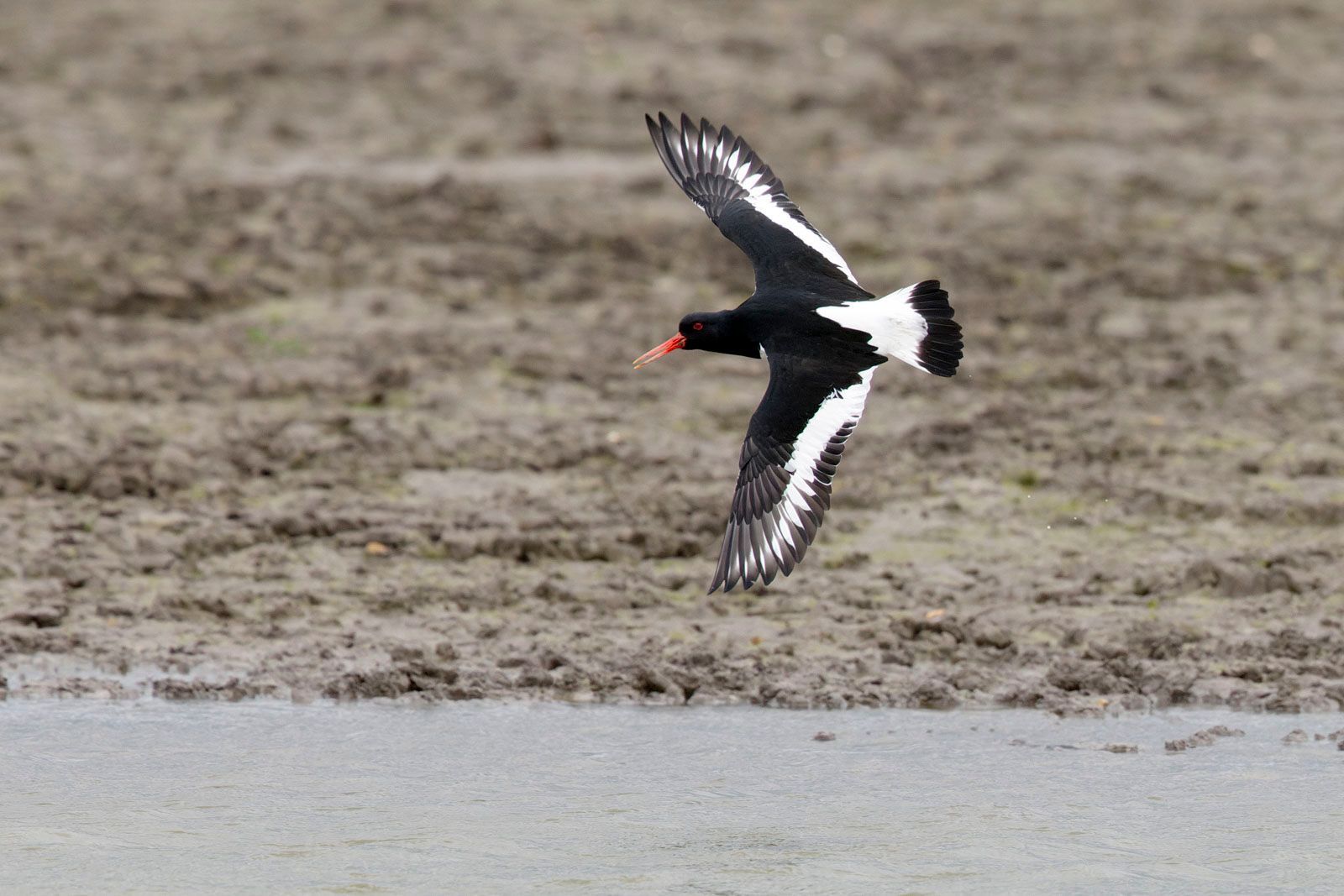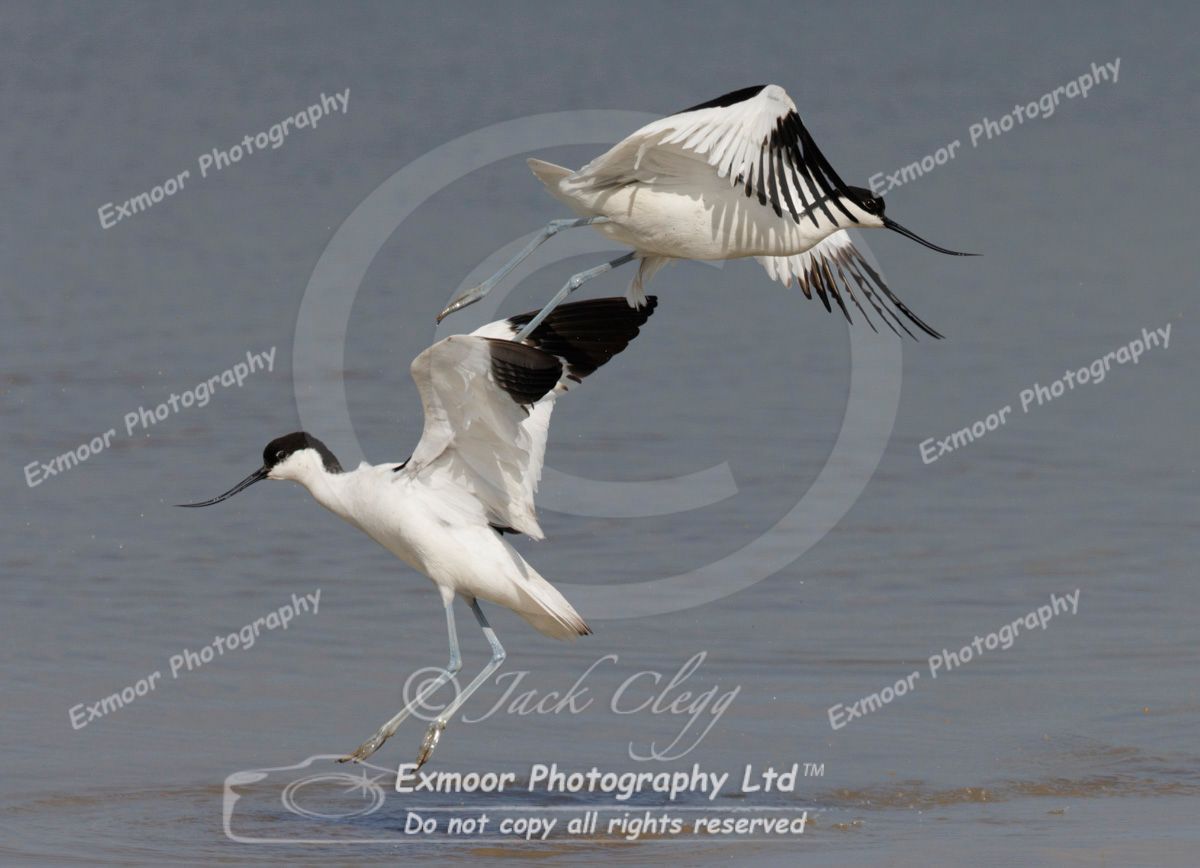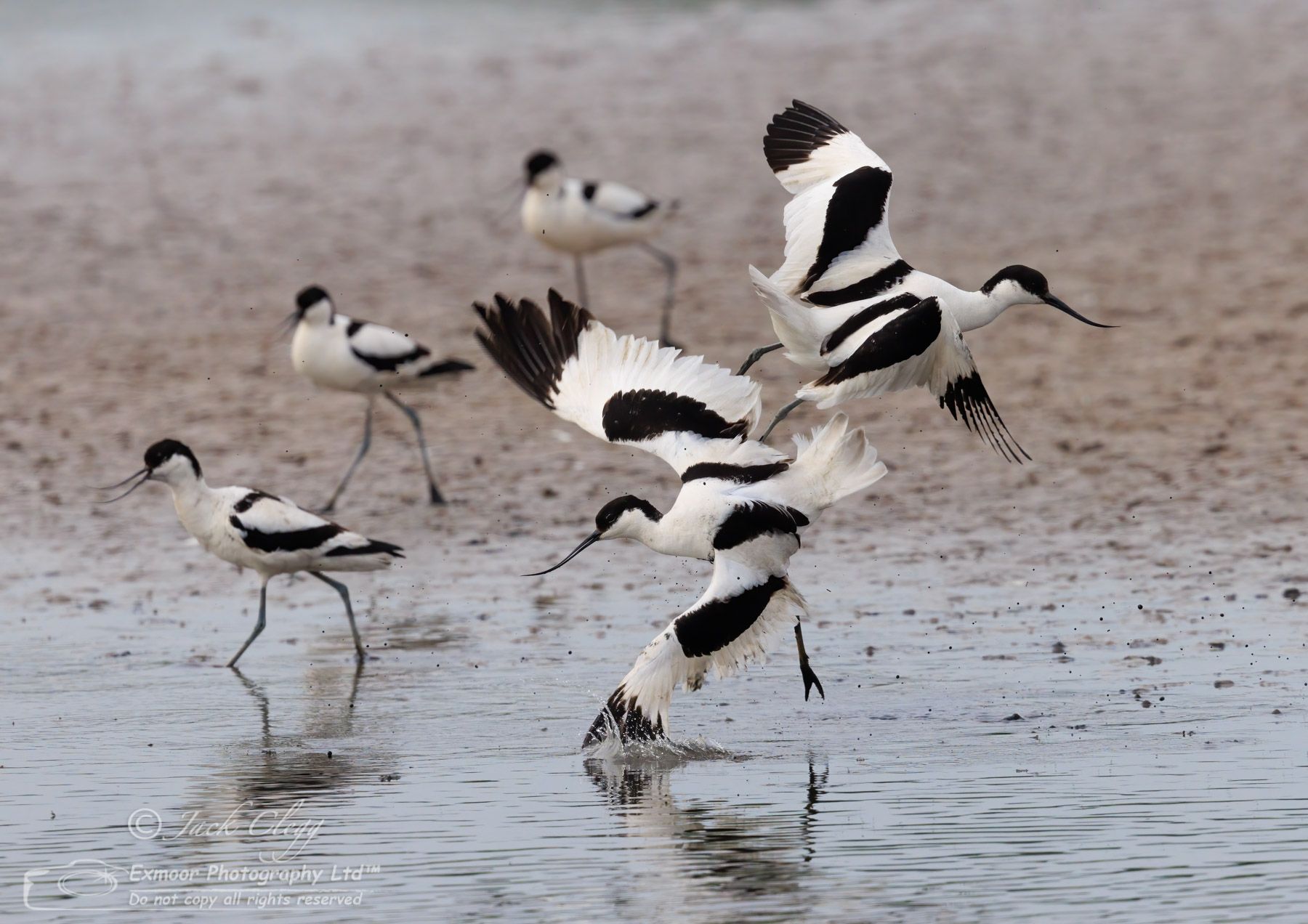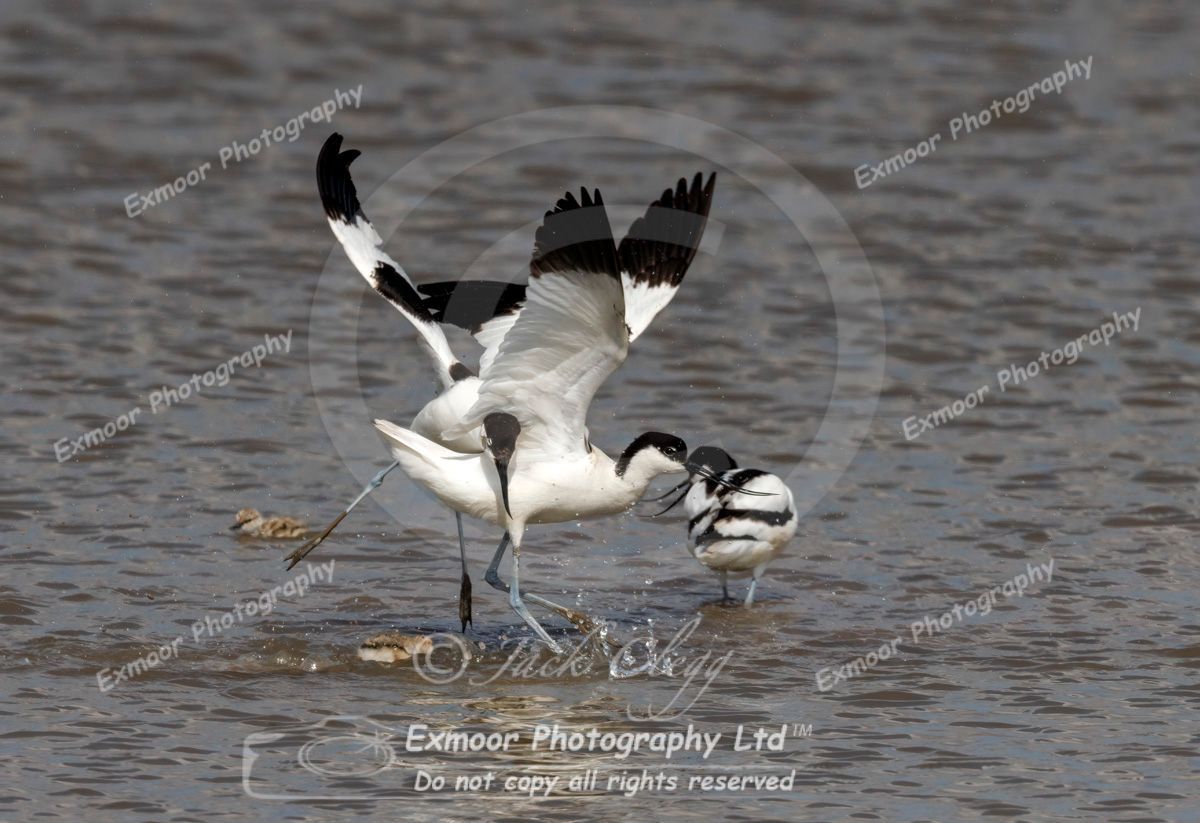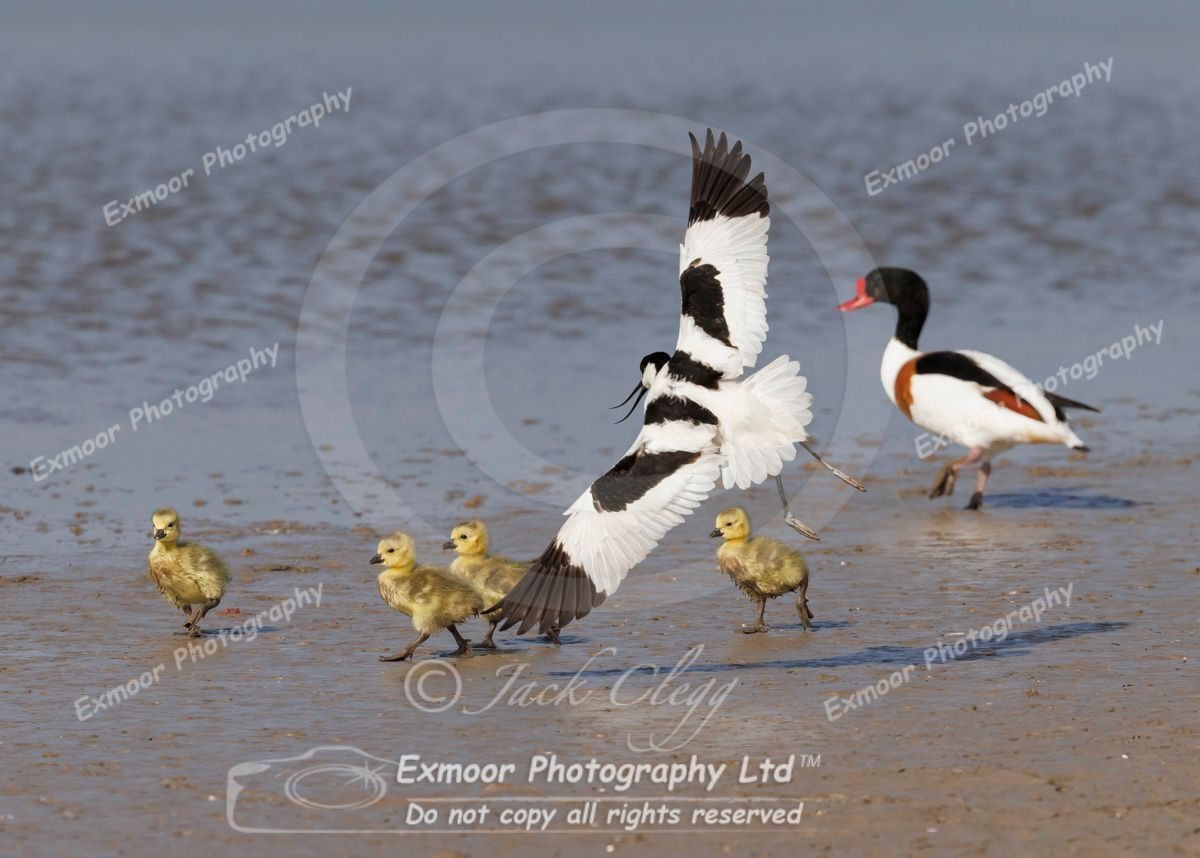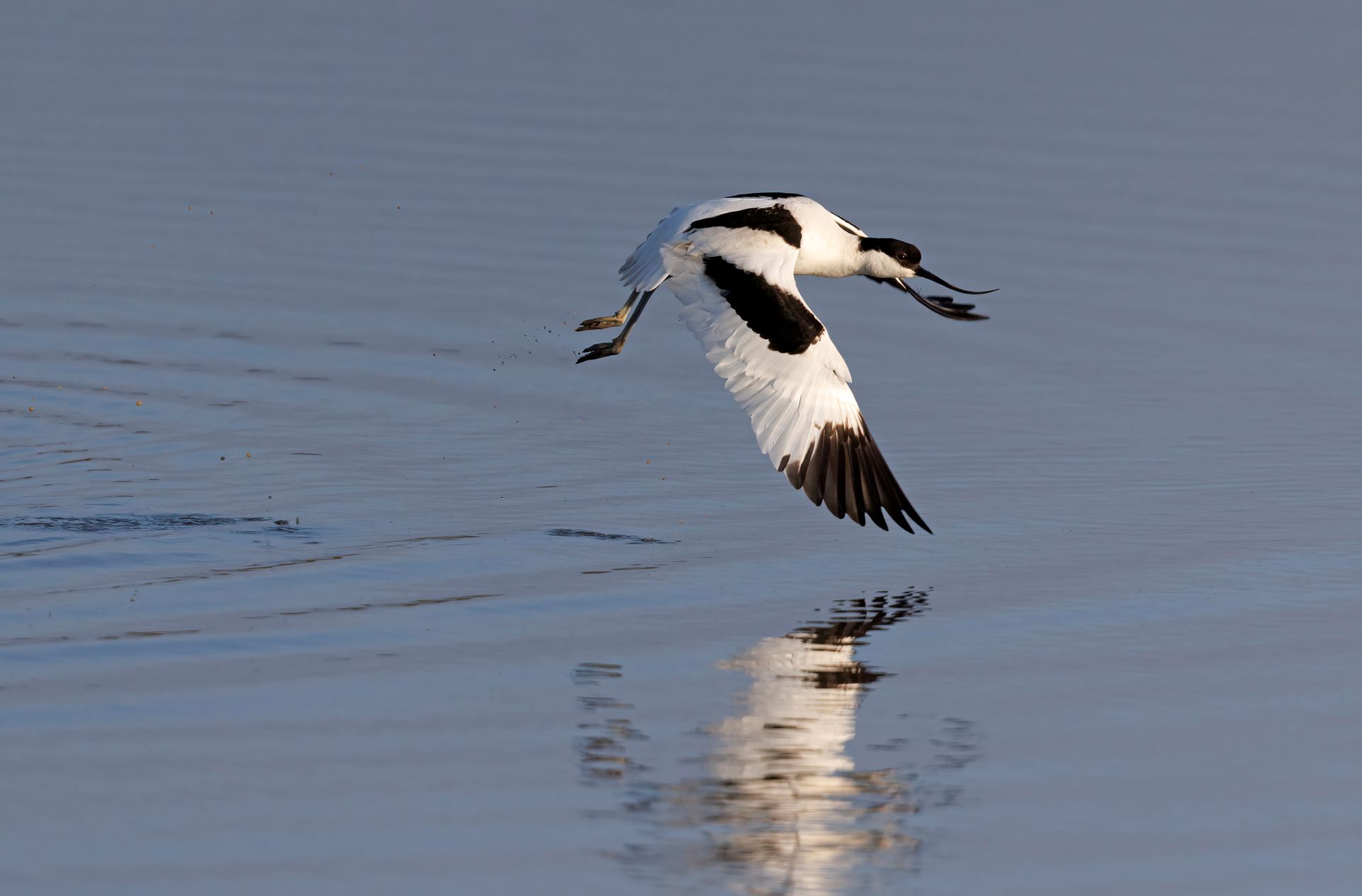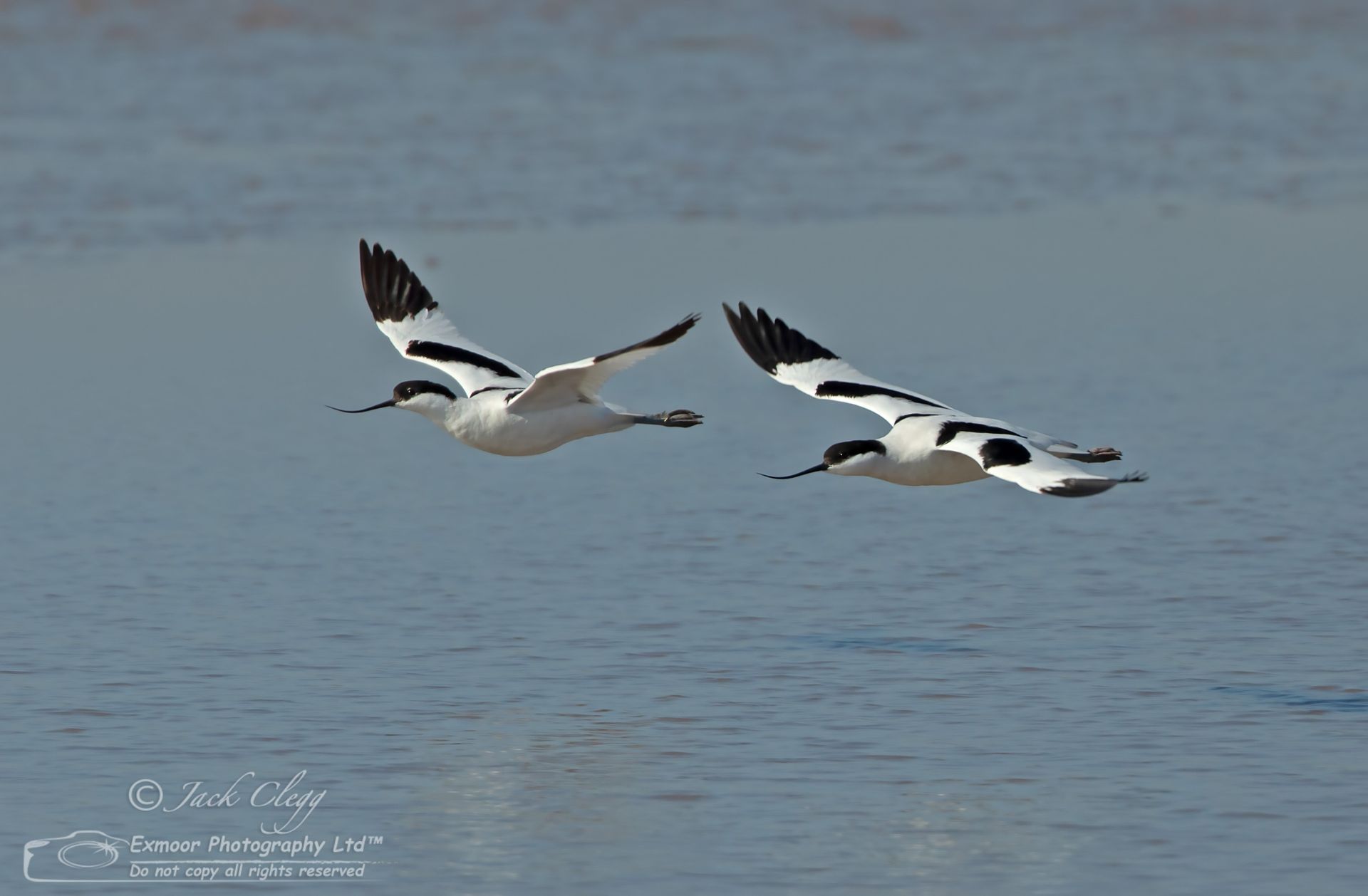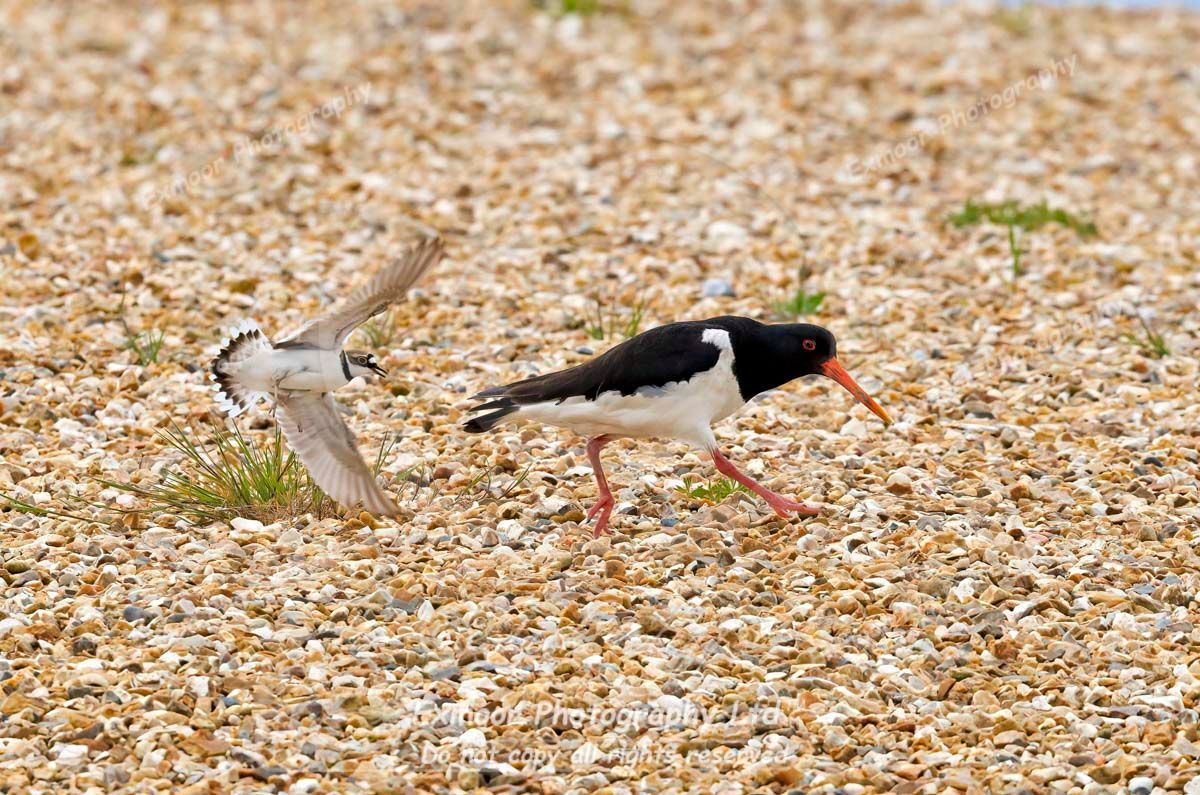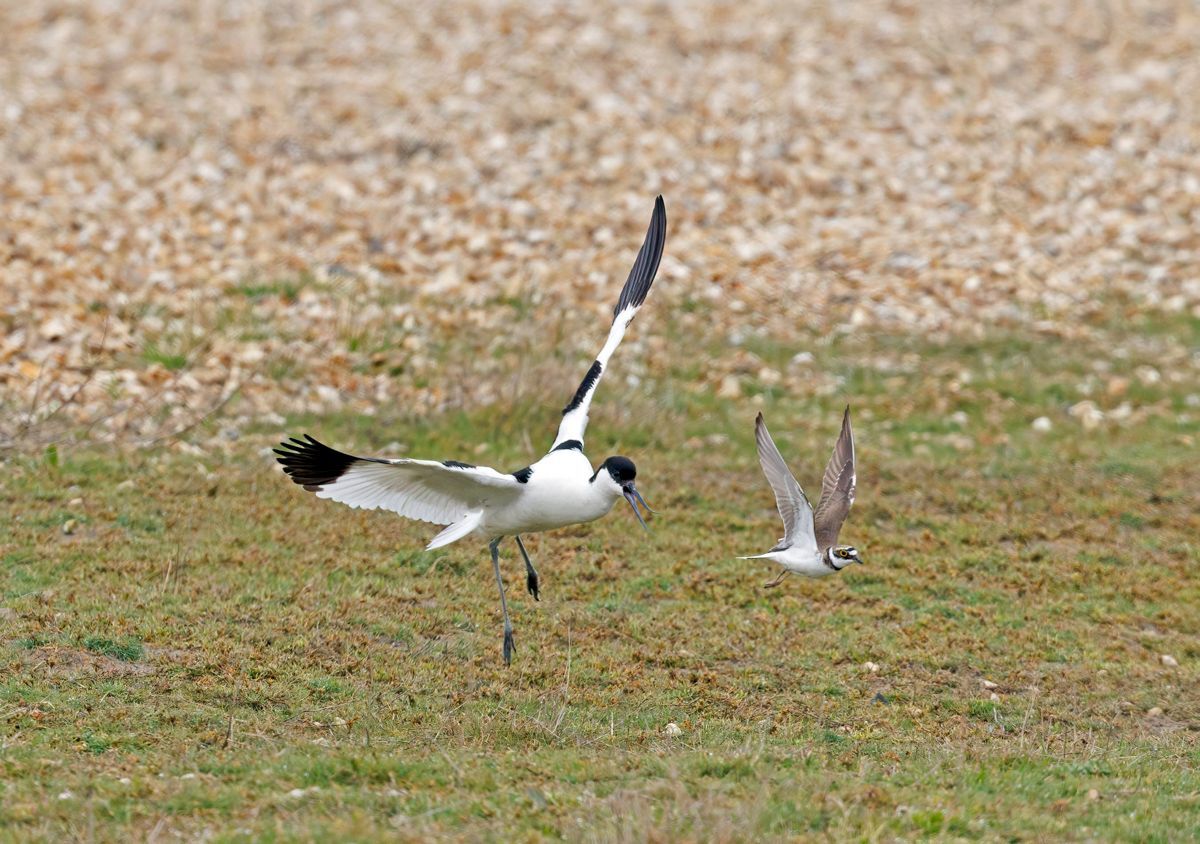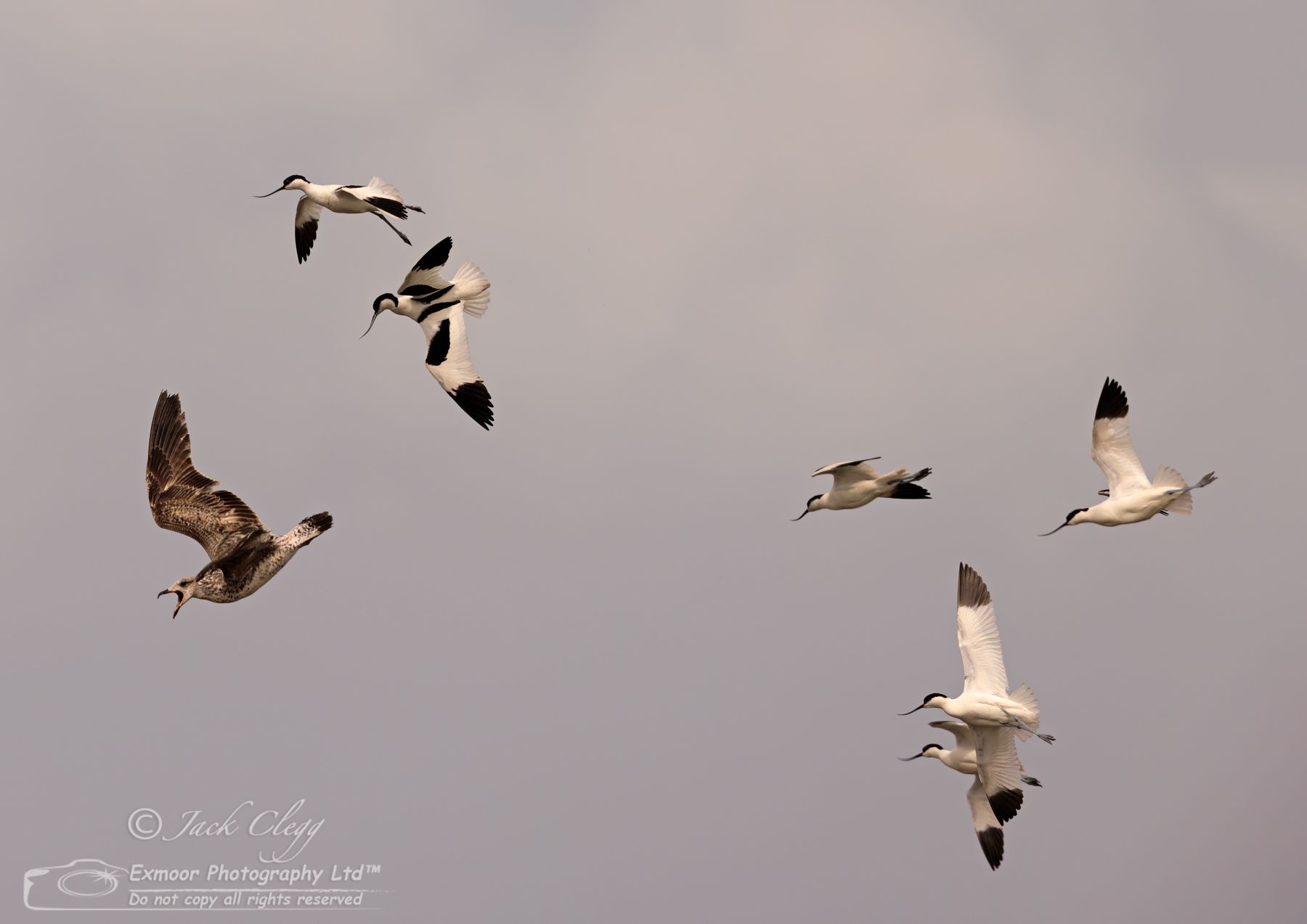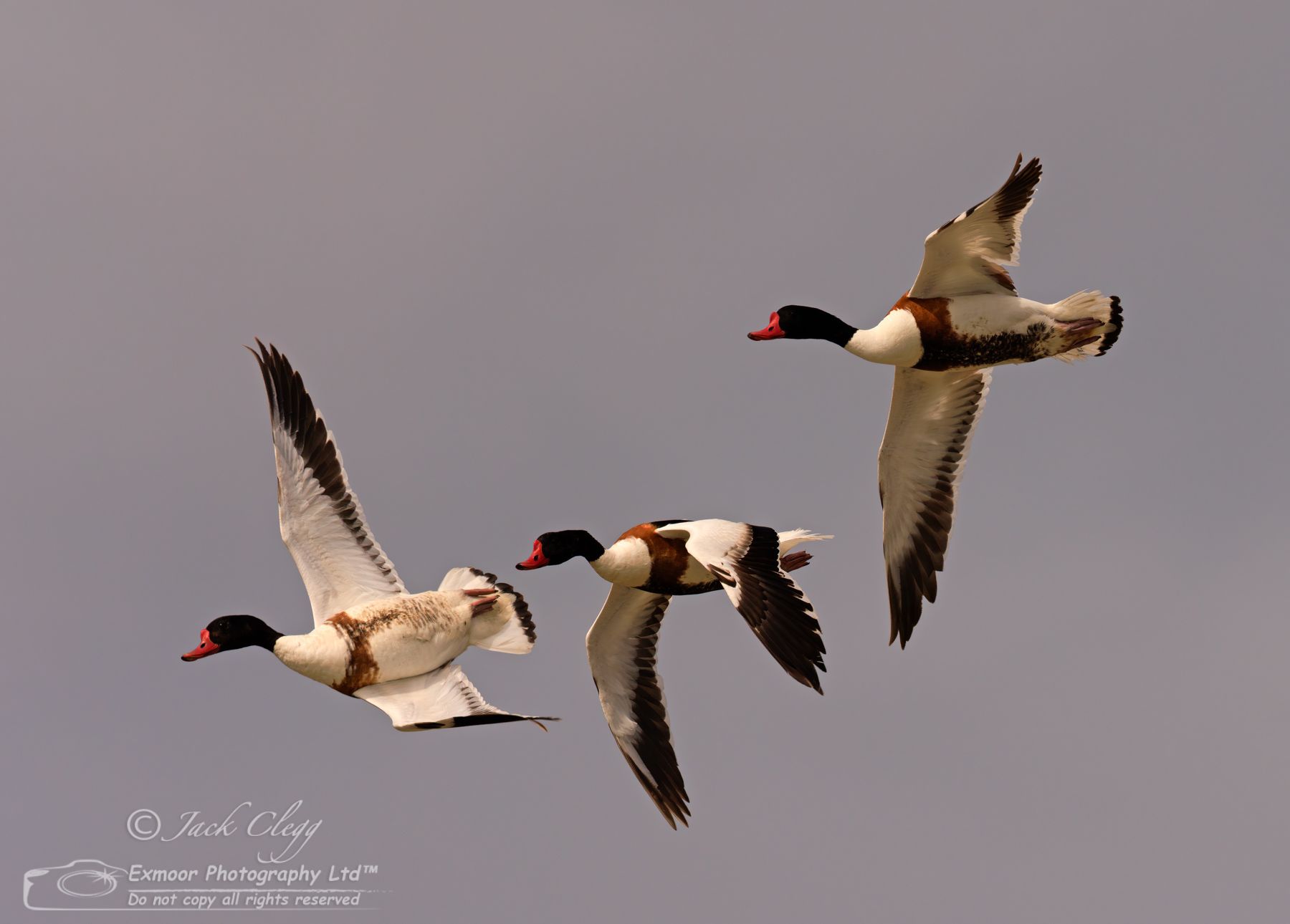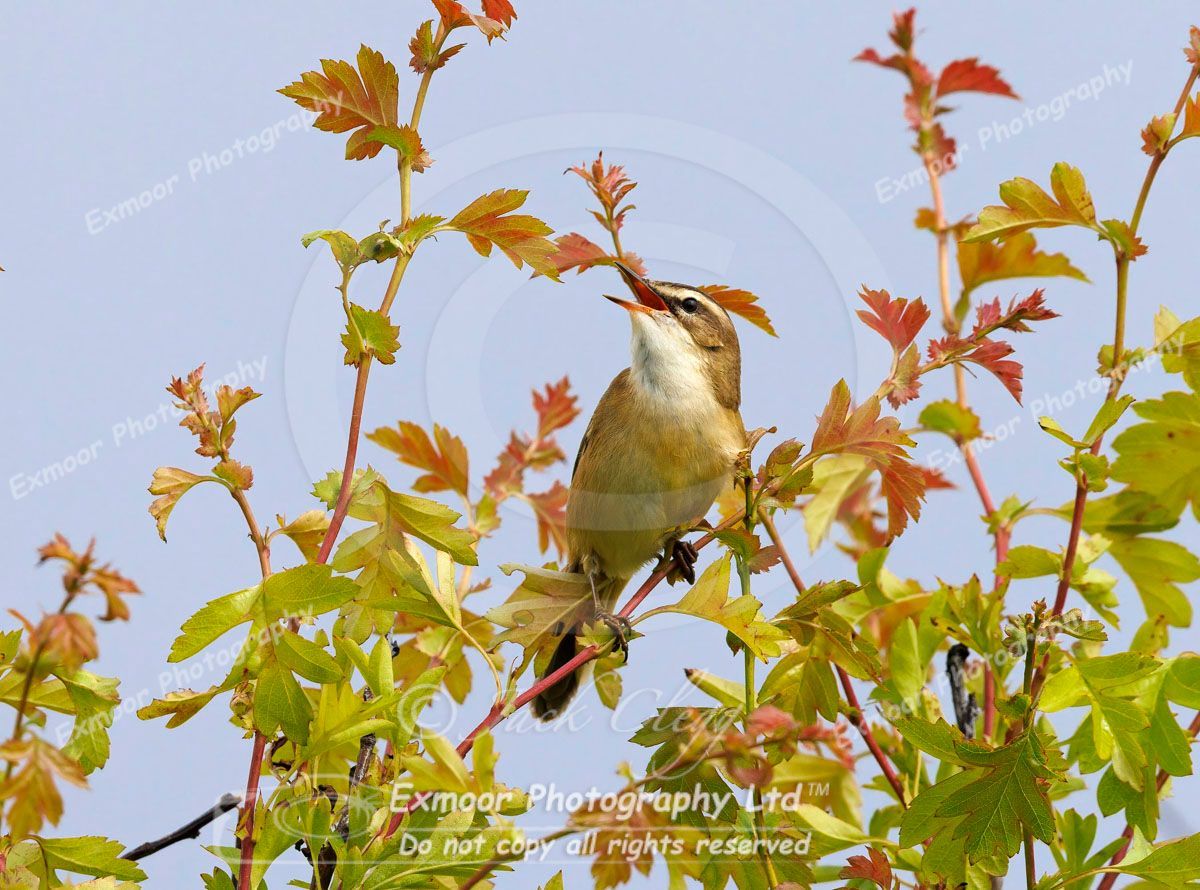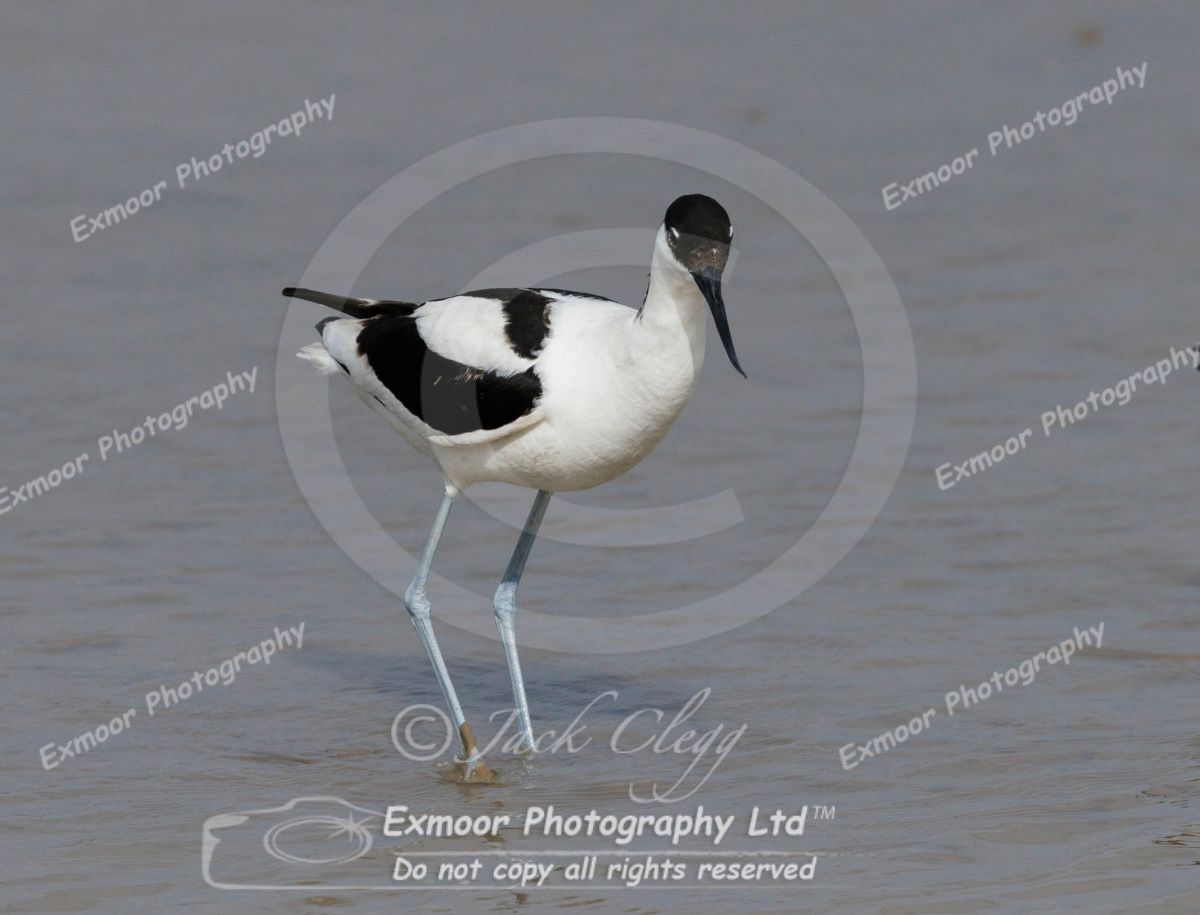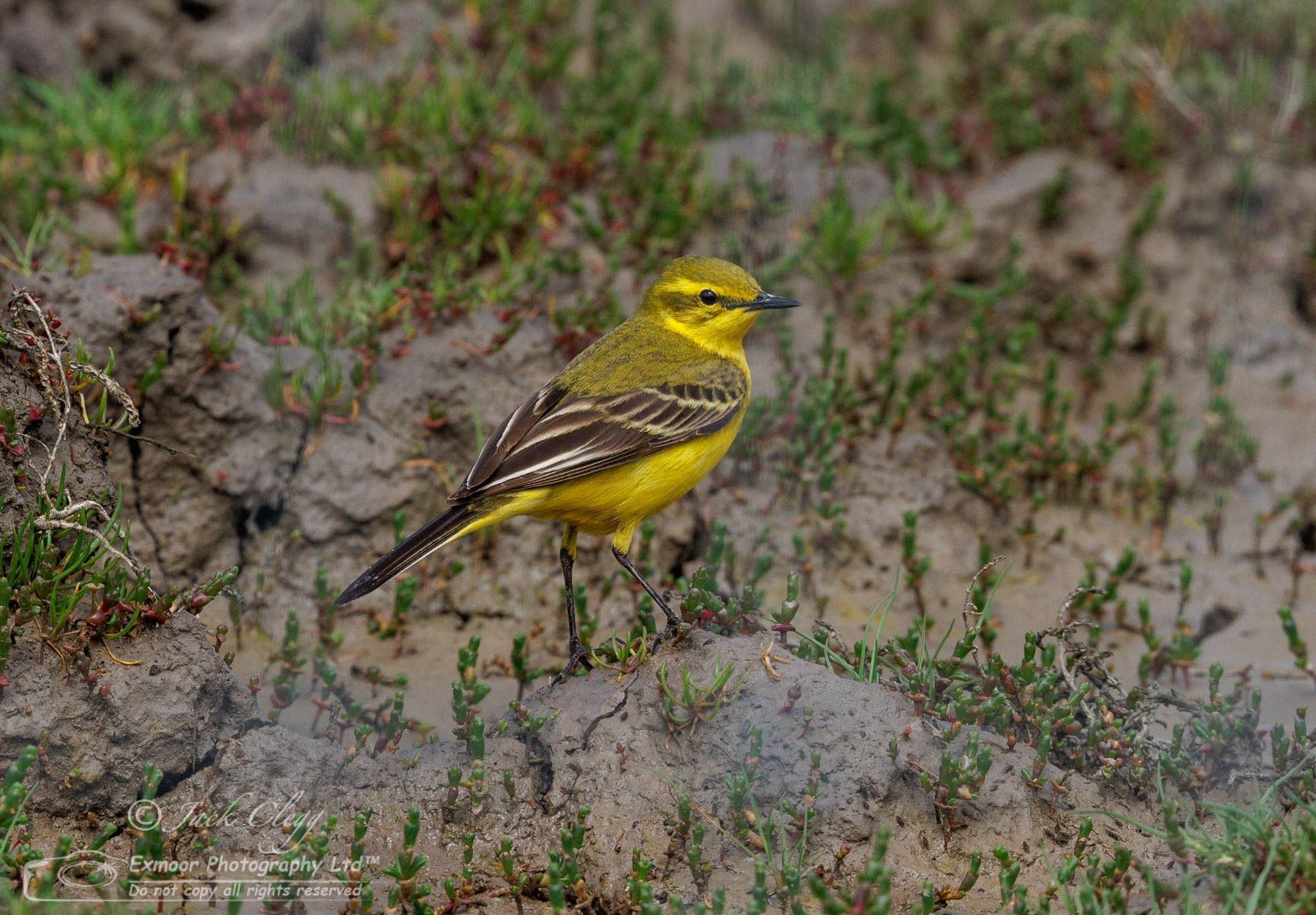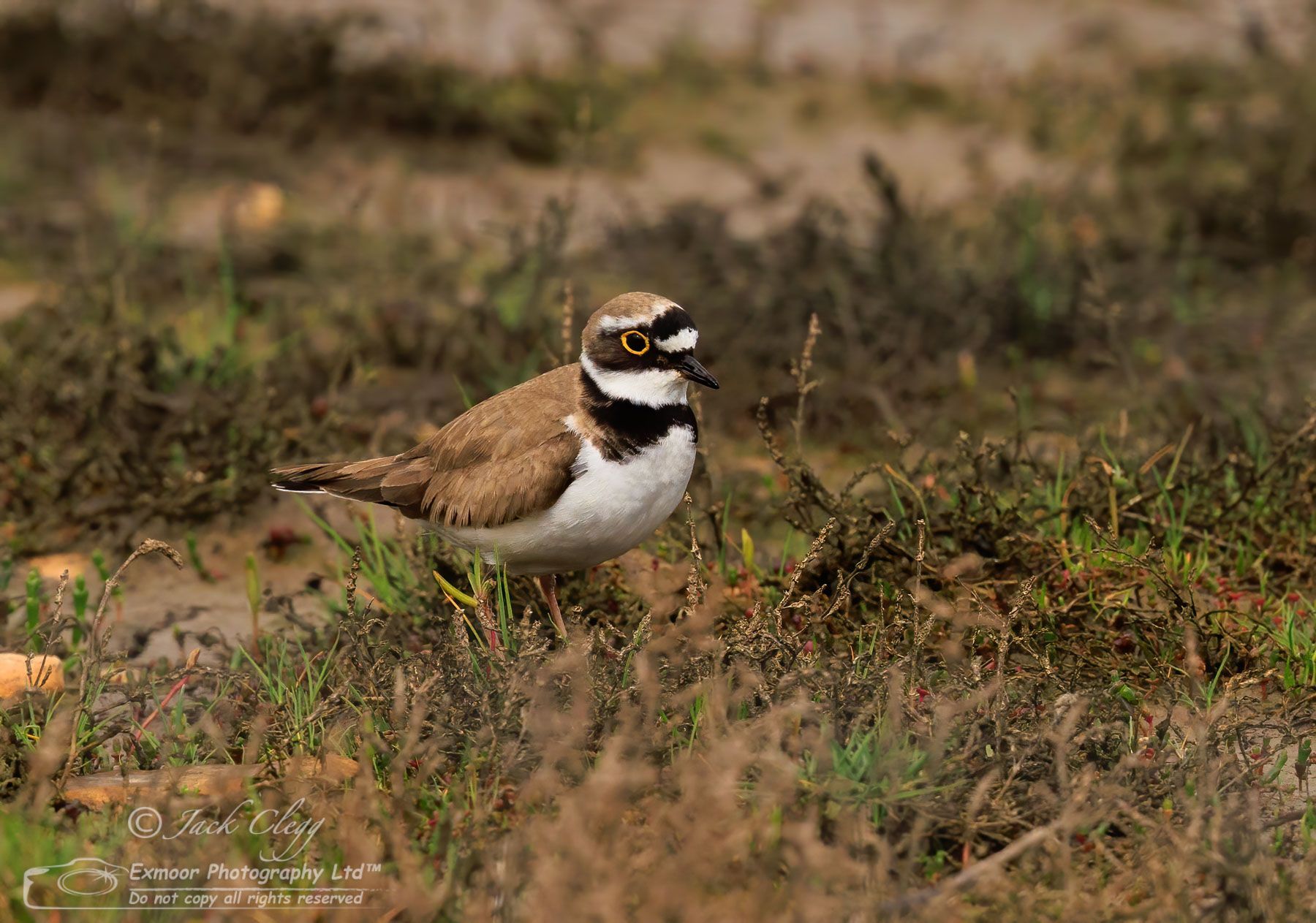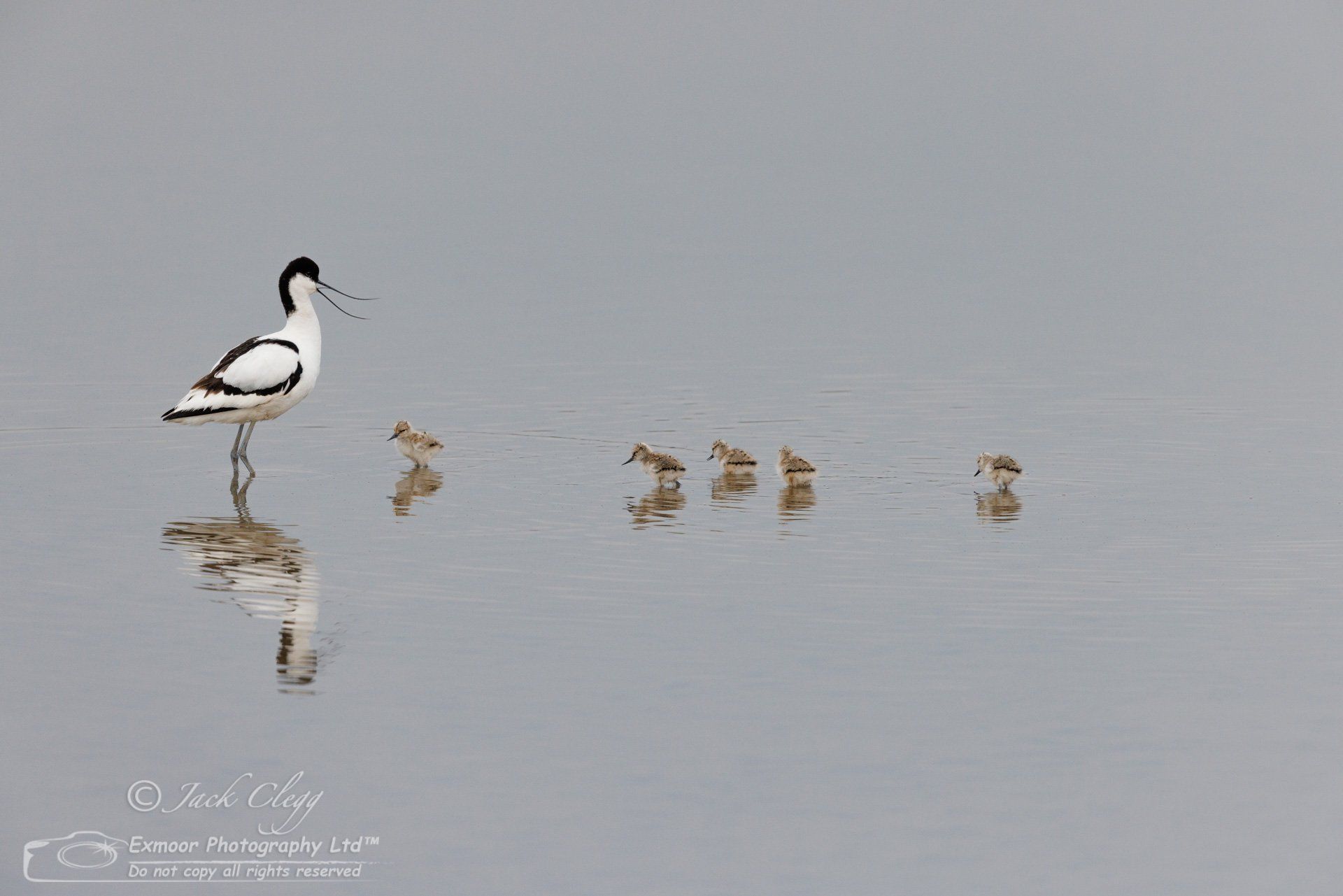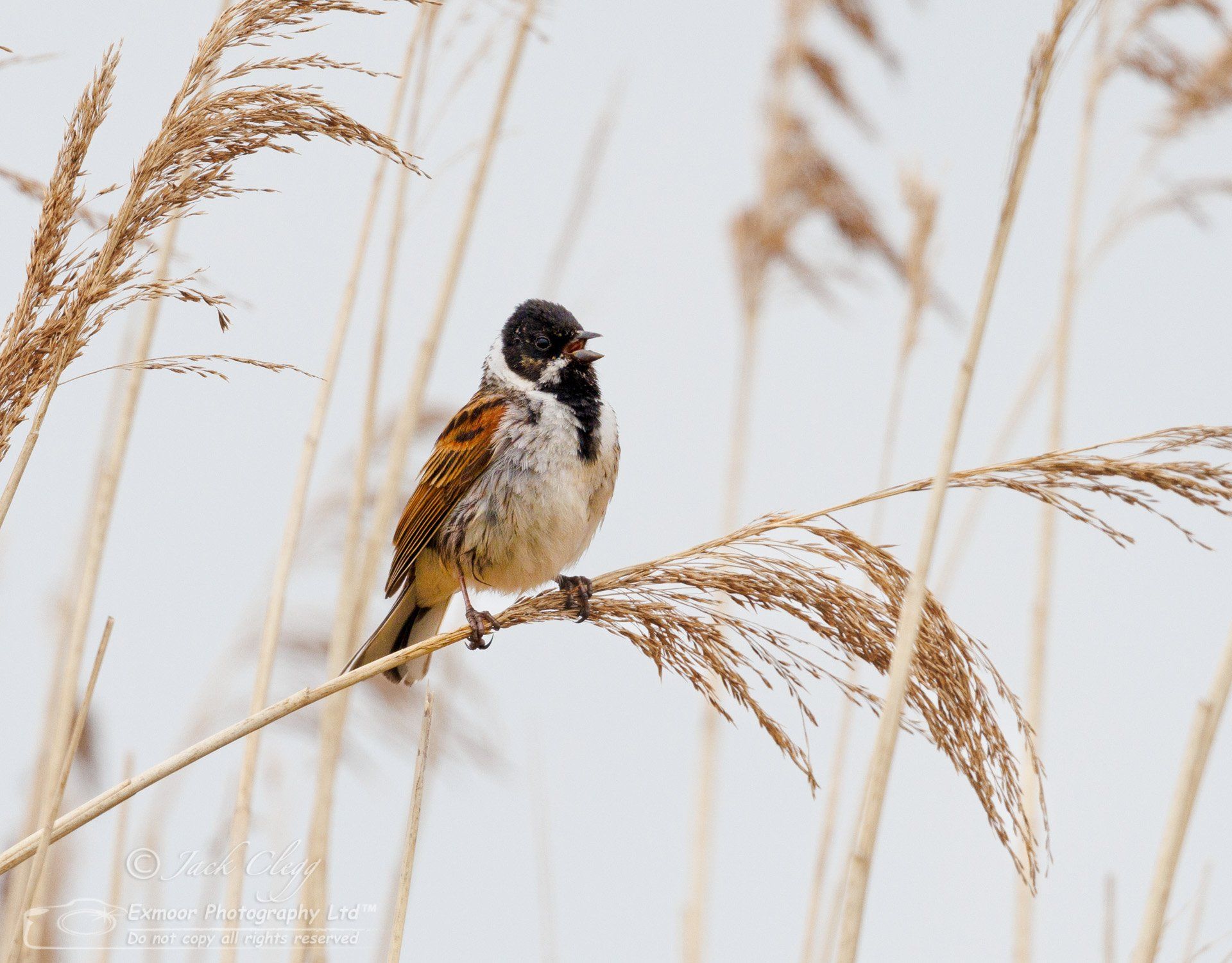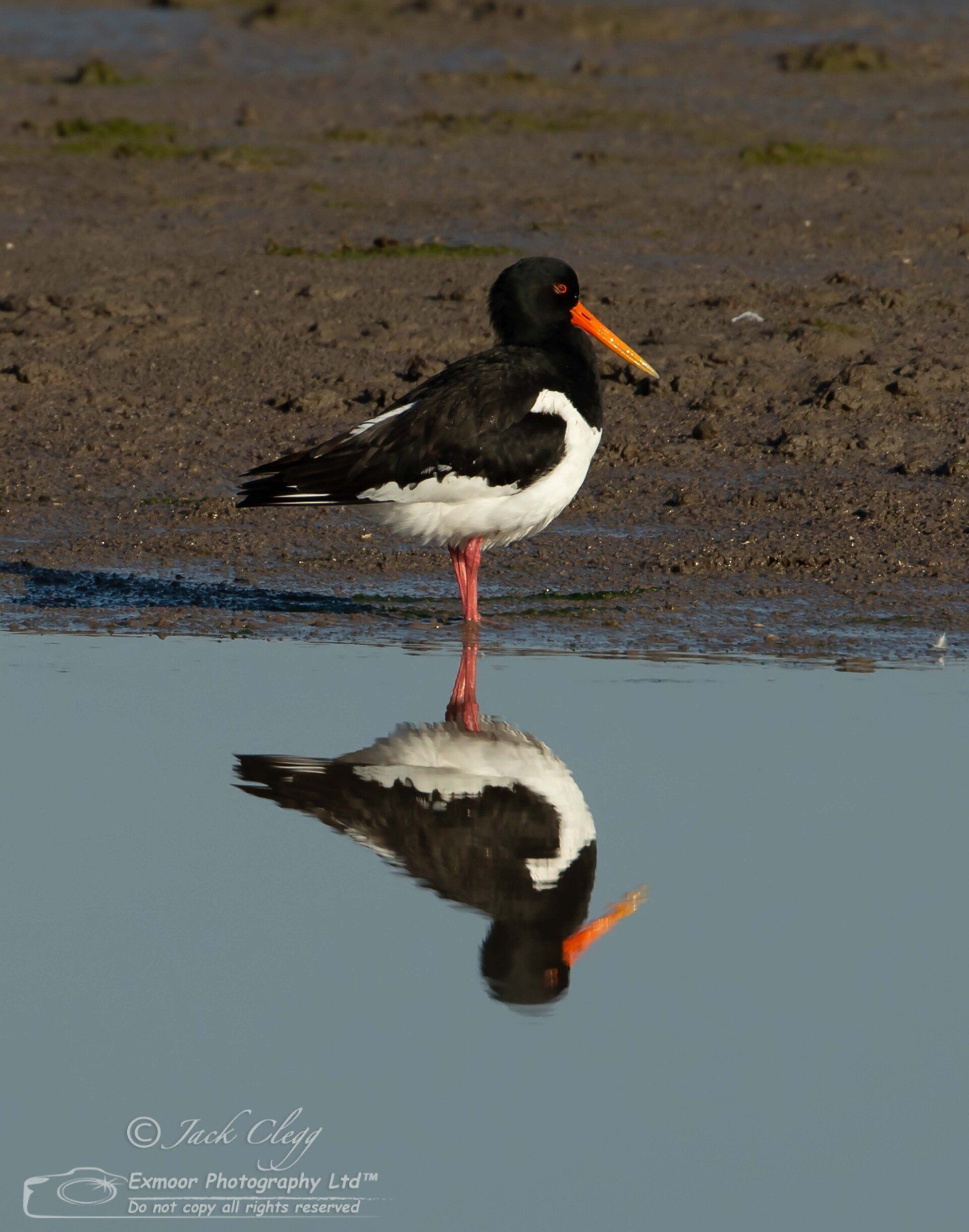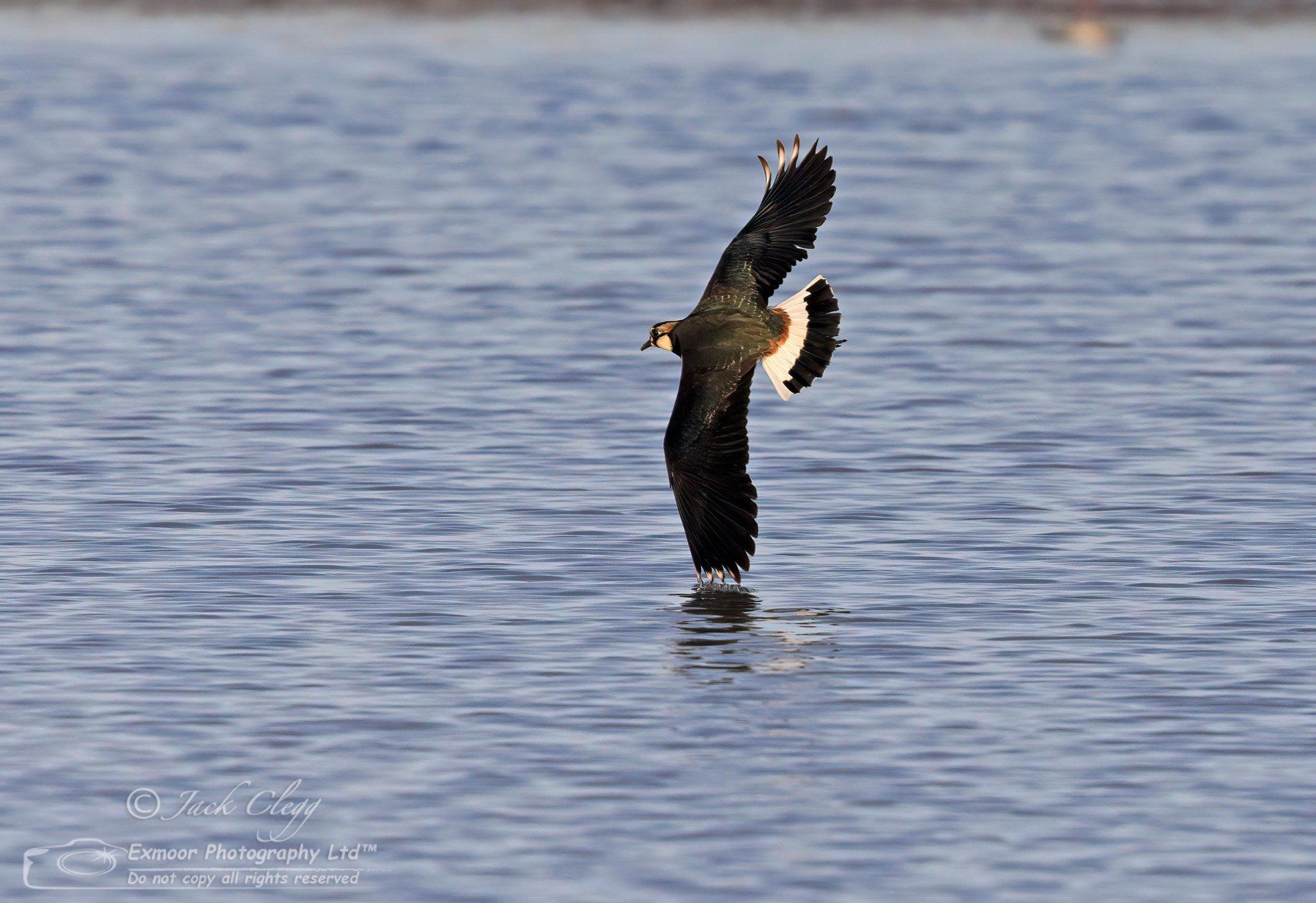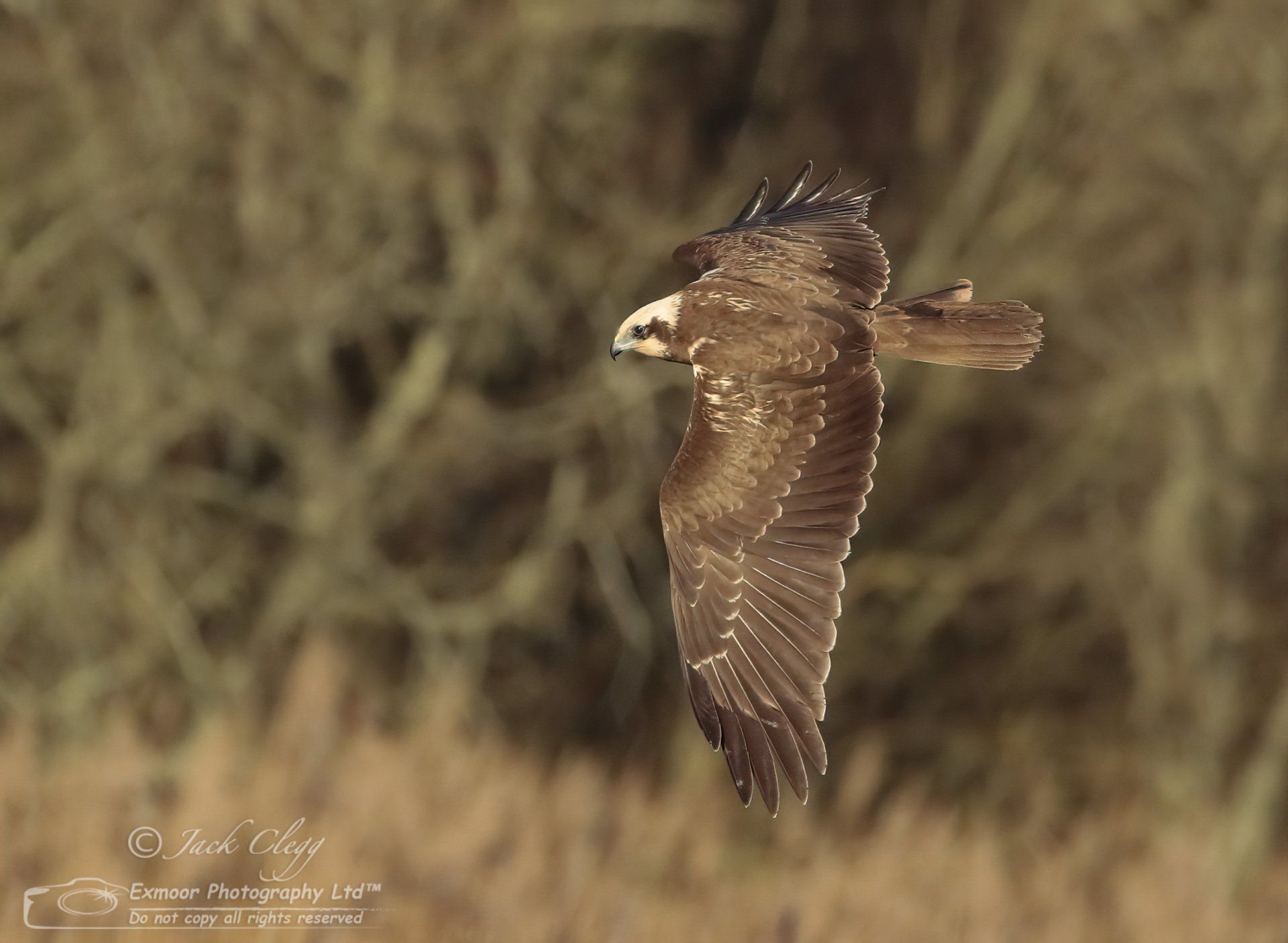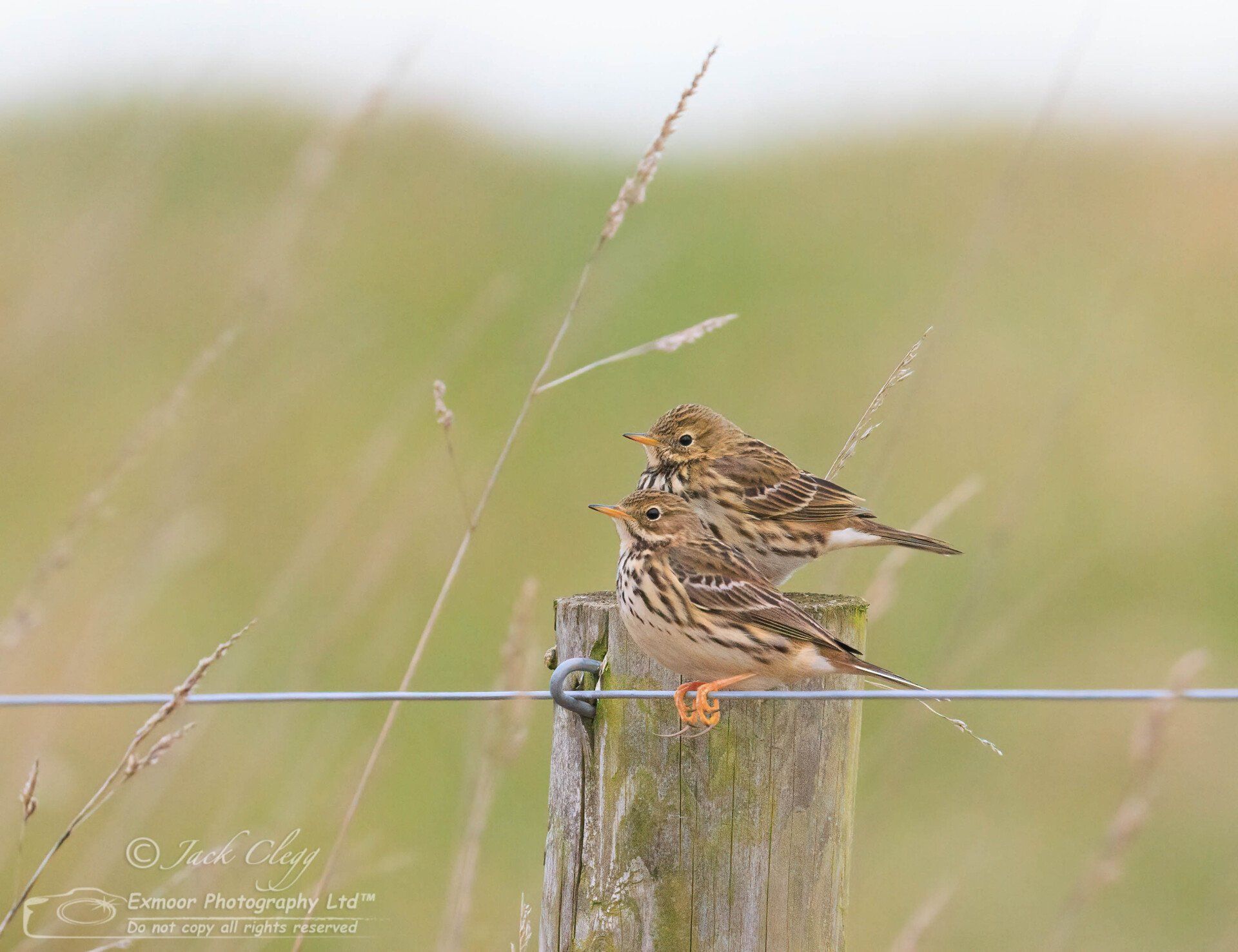STEART MARSHES BIRDING PHOTOGRAPHY SPECIAL - Info Page
Exmoor Wildlife Photography Course
Bird Photography Lessons with the experts at Steart Marshes, Somerset, UK. We will be visiting this excellent reserve in the spring to photograph breeding and summer visitors.
Tuition will include correct camera settings and fieldcraft, to successfully capture birds, with an emphasis on BIF’s (birds in flight).
LATEST NEWS: 2026 SEASON dates coming soon (end of april - mid may only)
Jack 12 04 2025:
I have visited the reserve several times already this spring and the Avocet numbers are looking great. It looks like there is up to 40 birds sitting so far and certainly lots of mating and territorial behaviour.
The Little Ringed Plovers and Oystercatchers are also pairing and chasing each other around. I also had lovely a view of a Hen Harrier, Red Kite, Cetti's and Reed Warblers and Wheatear on my last visit.
This really is one my favourite places to help anyone who wants to improve birds in flight photography.
FAQS:
This photography workshop is operated by Exmoor Photography Ltd and is not connected to the WWT or their staff, although they are aware of our visits and have given us permission.
We will be donating to the WWT for each date we visit. This workshop must be booked in advance (as with all our workshops) please do not just turn up.
Price & Group Size:
- Price: £125.00 pp (payment on booking)
- Group Size 2 maximum
- Parking: Free parking at reserve.
- Price includes reserve donations paid by Exmoor Photography to WWT
Workshop Schedule, Duration & Location:
- Days: Weekdays only
- When: End of April - Mid May (see diary on booking page)
- Duration: 6 hours (on site)
- Start Time: 8.00 am
- Finish Time: 2.00 pm
- Location: Steart Marshes Nature Reserve
What is Included:
- Our tuition and guidance offer confidence and knowledge in a relaxed, friendly setting at your own pace.
- Tuition includes correct camera settings and fieldcraft for capturing both stationary birds and birds in flight.
- Please See What You Will Learn Below
- Field Guide: Brand new workshop field guide booklets (yours to keep).
- Plus: How to Photograph Birds in Flight (BIF) supplement (yours to keep)
- Refreshments: Tea, Coffee & Cakes.
- Transport to location.
- Camera Hire also available.
Equipment Requirements:
Ideally you have the following equipment for this workshop:
- Camera: D-SLR, mirrorless or bridge with a frame rate of at least 7fps is preferable.
- Lens: 500 mm plus (or equivalent) Bridge camera at least 20x optical zoom lens, which will give roughly 600mm (35mm equivalent).
- If using a mirrorless system micro 4/3 you will need at least a 400mm lens (a 300mm is NOT recommended).
- Popular examples: Sigma 150-600 mm, Canon RF 100-500 mm and Nikon Z 180-600 mm.
- Tripod: Yes, if you have one, we always have them onboard if not.
- Monopod: Yes, if you have one, we always have them onboard if not.
If you’re not sure, please ask Jack for advice when you book. We also have cameras that you can hire on your course day, subject to availability.
How to Book & Weather:
- Booking: see Book Now Tab Steart Marsh
- You will be emailed comprehensive instructions, with your welcome pack and booking confirmation.
- Weather: In the event of a bad weather postponement, we will re-book your workshop ASAP.
- Meet & Greet Option 1): The meet & greet is at Exmoor Photography, Hillbrook, Marshfield Rd, Minehead, TA246AJ (and return). We will ‘meet & greet’ at 7.00 am at Exmoor Photography office and will return at approximately 2.30 pm.
- Option 2): The meet & greet is at WWT Steart Marshes, Stert Drove, Bridgwater, Somerset, TA5 2PU Grid reference: ST 25208 44210 (and return). We will ‘meet & greet’ at 7.45 am at Steart Marsh main carpark and will return at approximately 2.00 pm.
- These workshops must be booked in advance (as with all our workshops) please do not just turn up.
What Our Customers Say:
Contact Us
Exmoor Photography Course
Landscape, Birding & Nature Photography Lessons
Choose Your Course: You Choose We Teach
(Workshops & some Specials can be booked as Exclusive 1:1)



